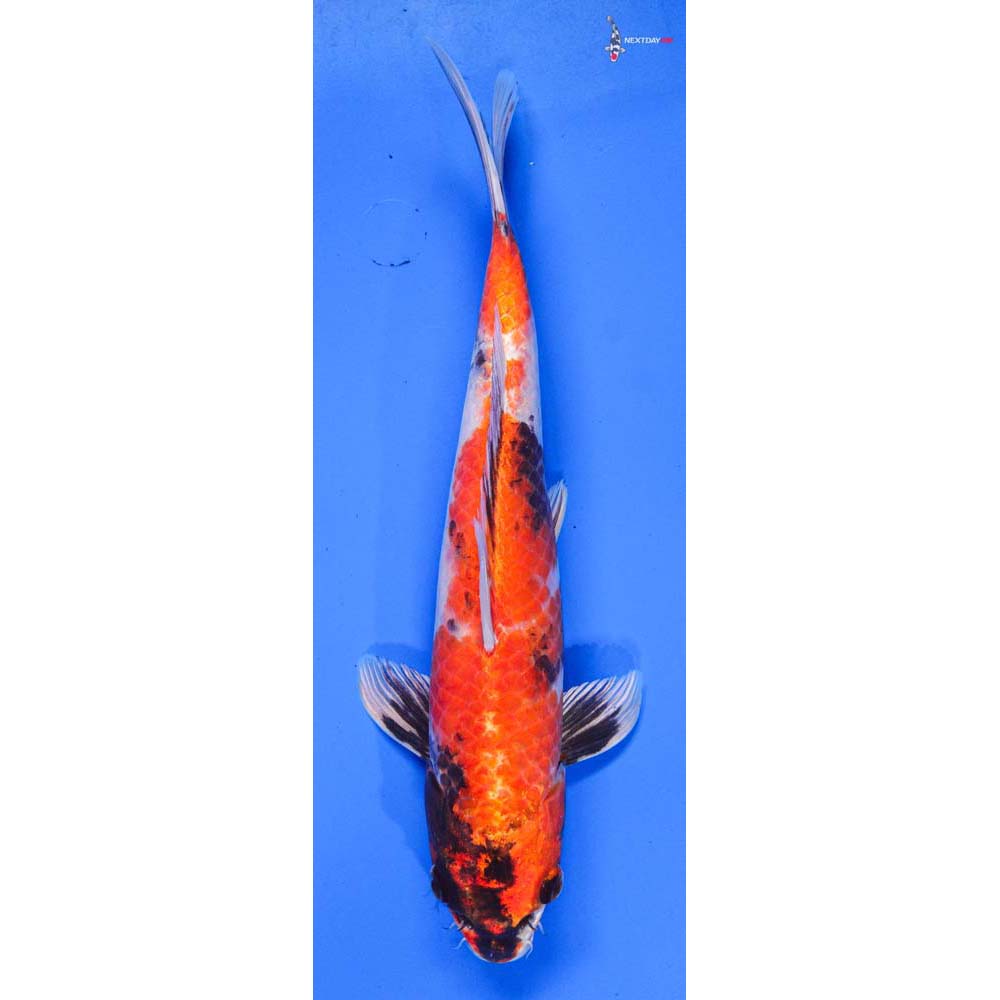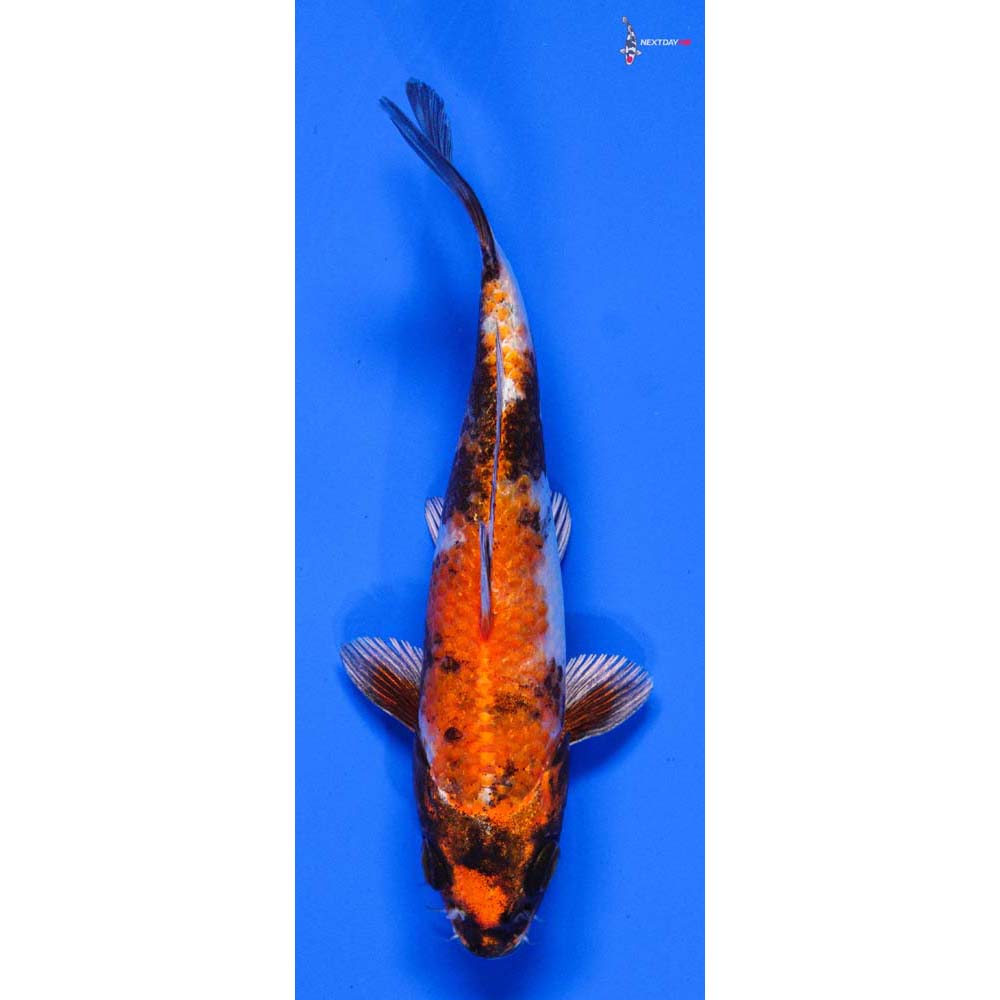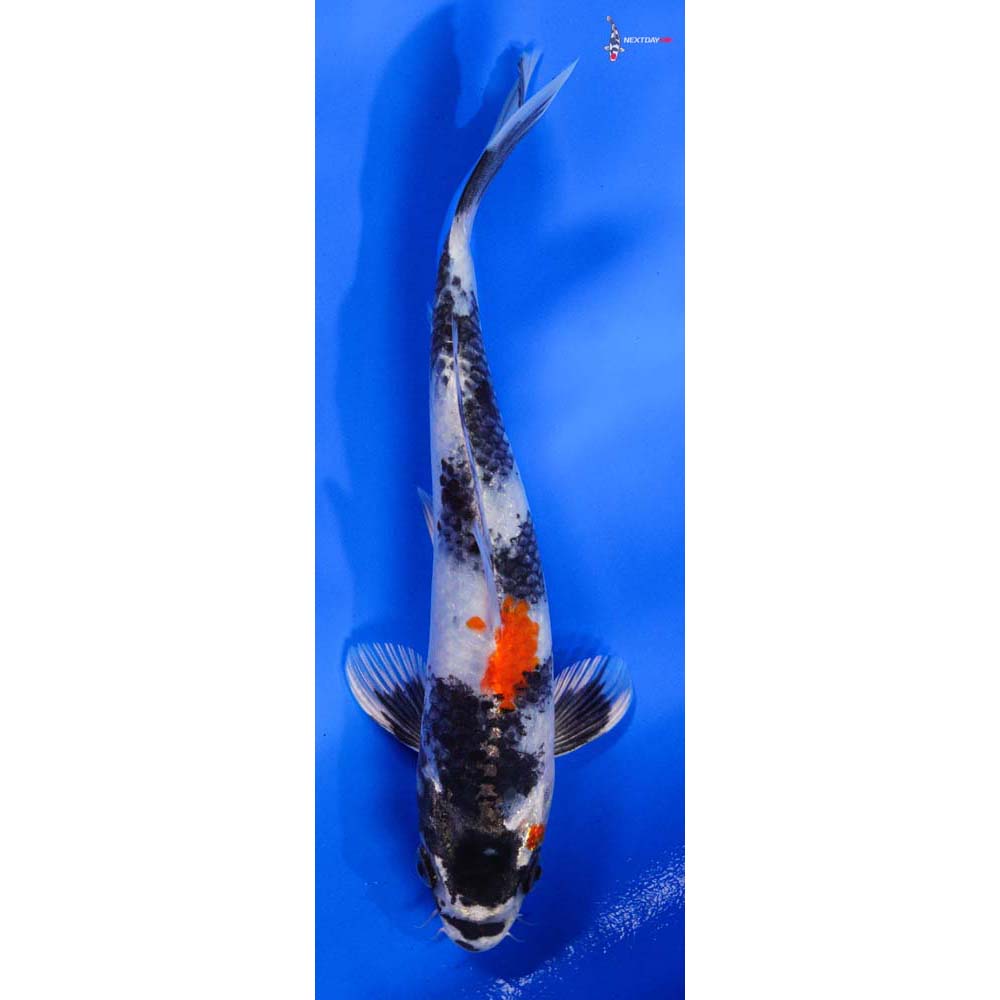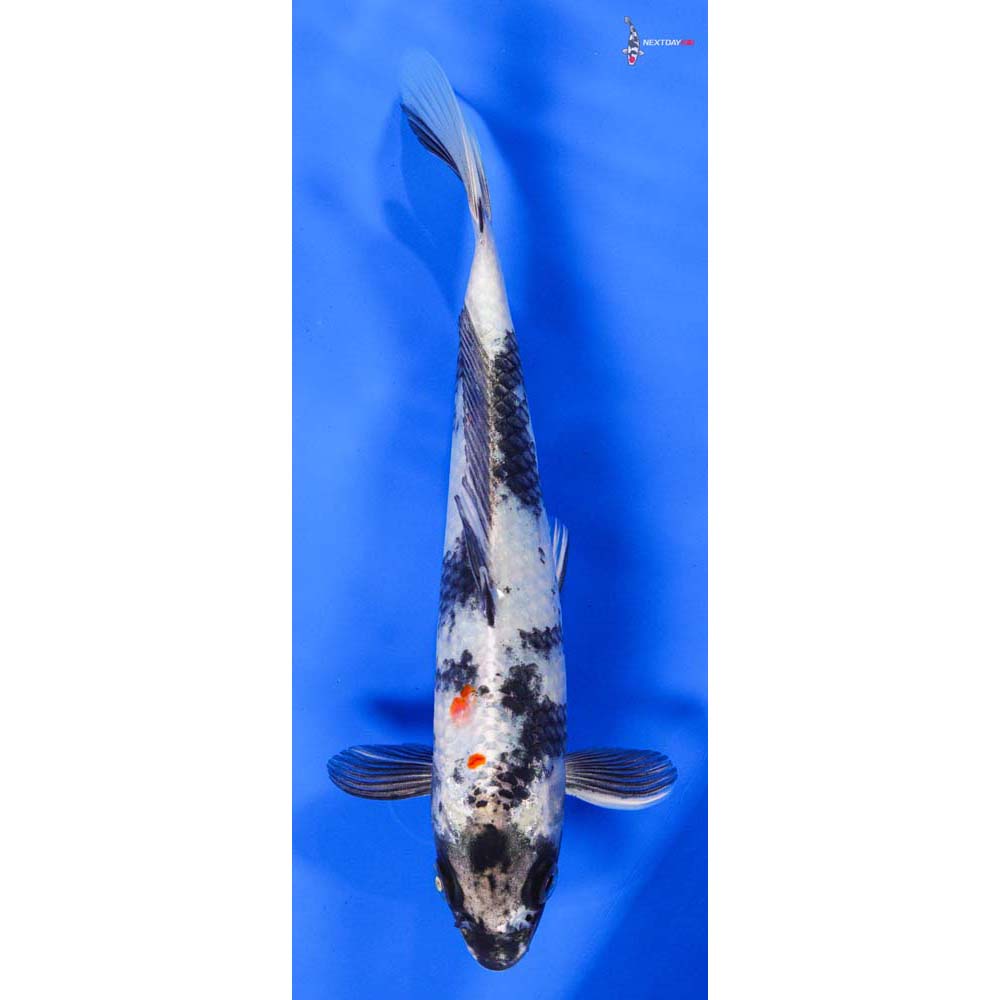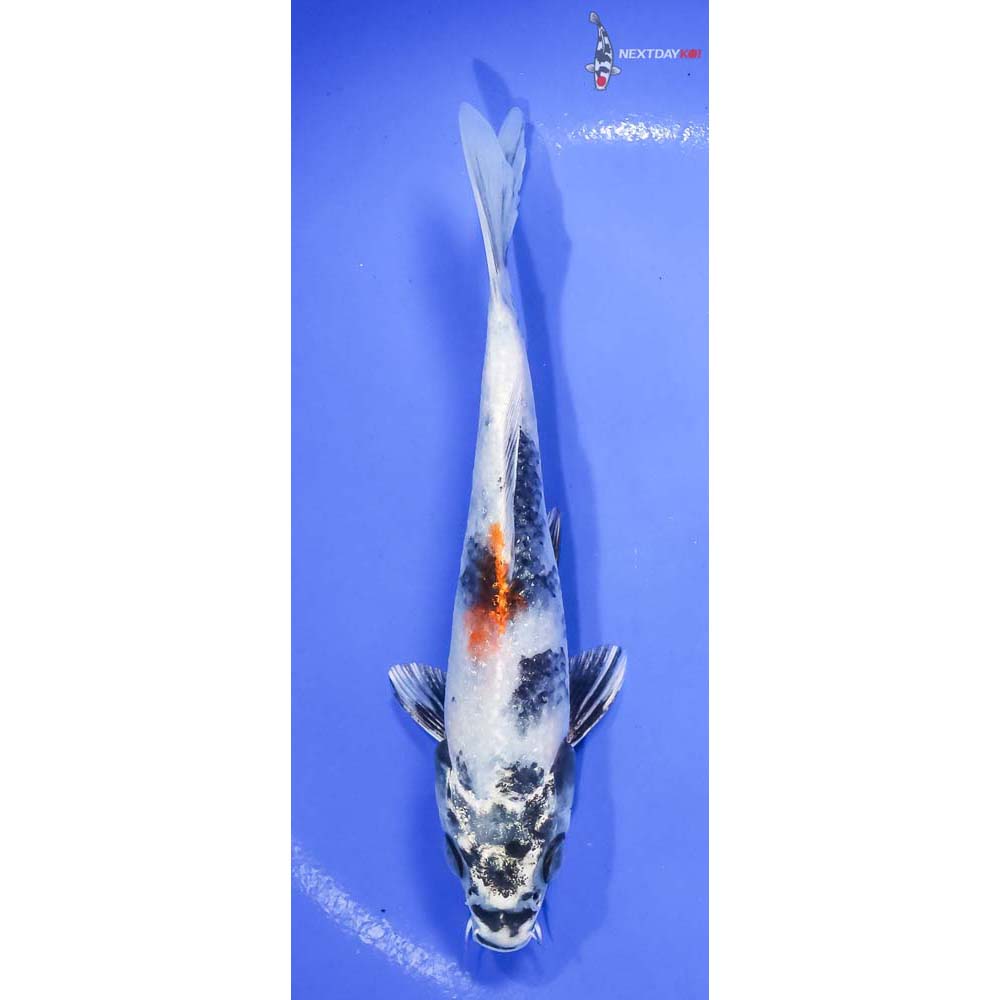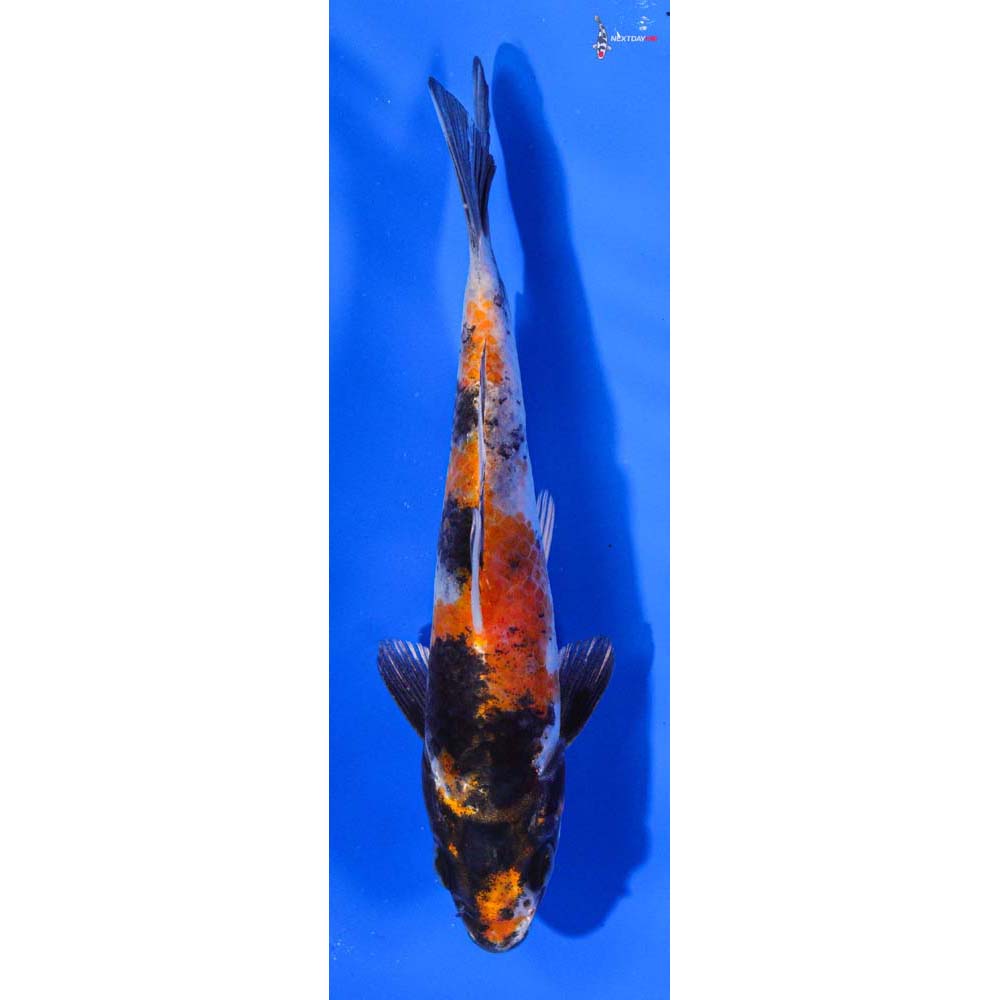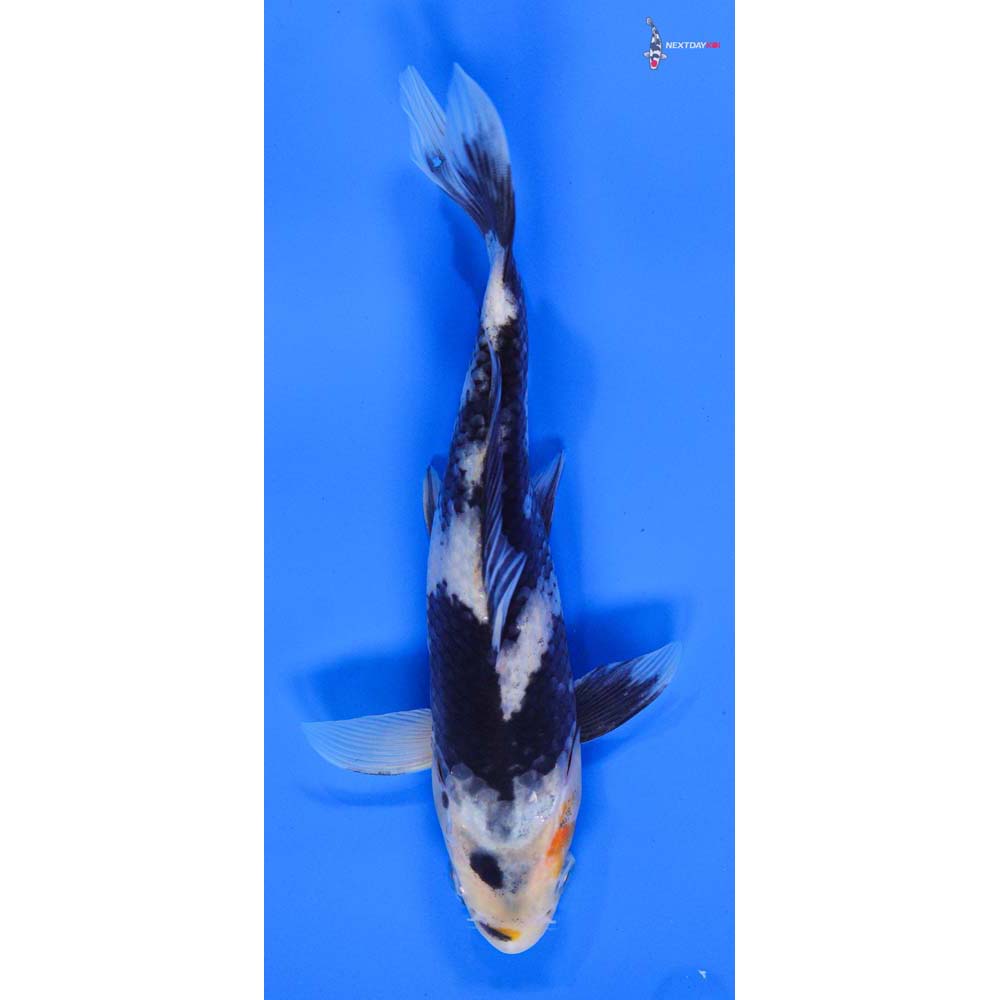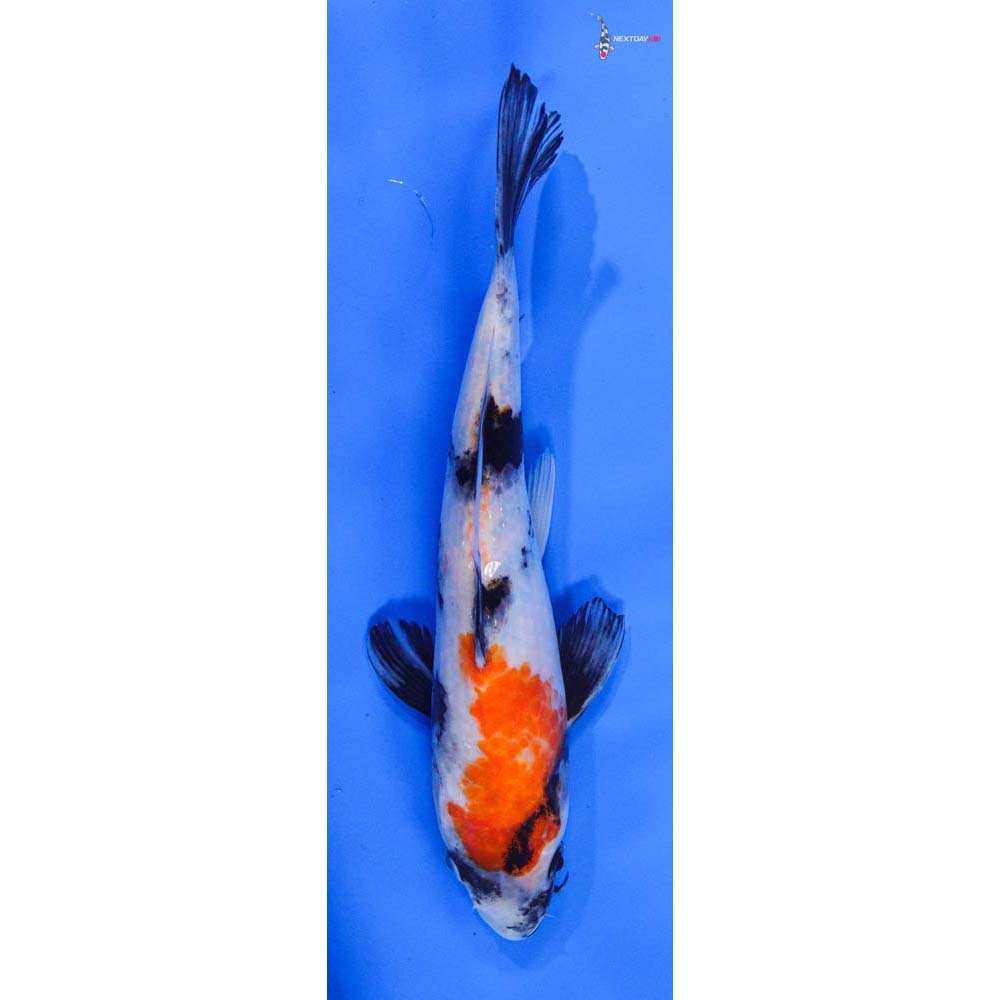In 1964, breeders began crossing female Showa with male Kohaku. The resulting offspring showed drastically improved red and black colors, and eventually produced the type of koi that we think of as Showa today.
What To Look For
Showa are koi with a solid black body and areas of red and white pattern overlaying the black. The pattern created by the three colors should be distributed evenly about the body, with sharp, clean edges between areas of different color. Preferably, the red should be the dominant color, with the black and white complimenting the red in equal proportions.
If a Showa is more than 50 percent red when viewed from above, it is referred to as a Hi Showa. Hi Showa are sometimes difficult to differentiate from Hi Utsuri. The best way to tell them apart is to look for small areas of white, which would indicate that the koi is a Showa (Hi Utsuri have no white anywhere on the body).
Some Showa exhibit black patches at the base of the pectoral fins, known as “motoguro”. Motoguro is a desirable trait among Showa, but clear or white fins are also acceptable. Solid black fins on a Showa are generally viewed as inferior.
When choosing young Showa, it is important to remember that the hi and sumi will darken and intensify as the koi grows older, and can fluctuate very much throughout a Showa’s lifespan.

